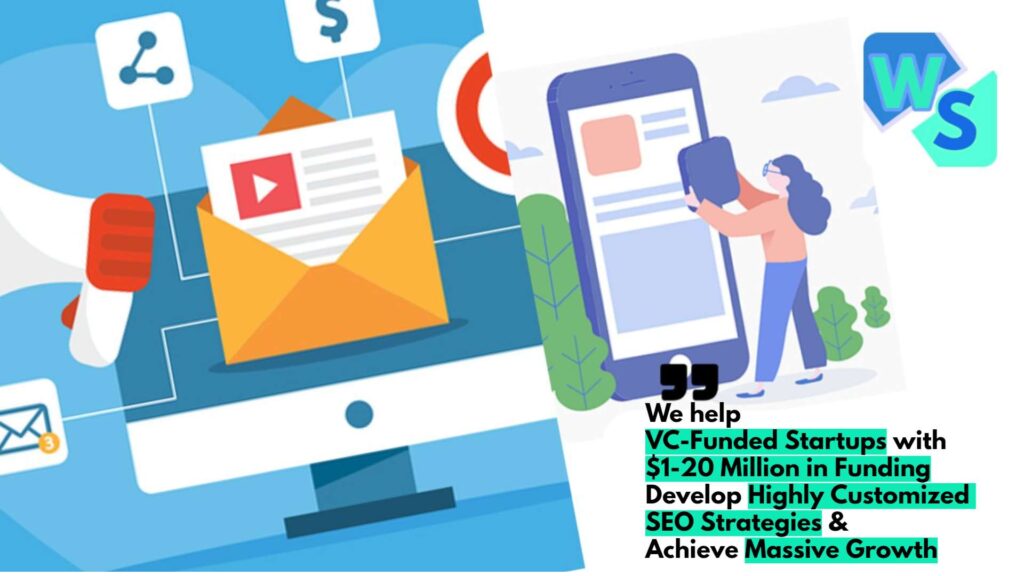Understanding Competitive Advantage
Definition and Importance
Competitive advantage is like having the secret sauce that makes a business stand out from the rest. It’s what lets a company whip up products or services better or cheaper than their competition. This special edge can come in many flavors: pricing, brand reputation, quality of products, delivery methods, intellectual know-how, or even customer service with a smile thrown in. Any hotshot CEO, business owner, or marketing whiz aiming to beef up their market presence should wrap their head around these concepts. Got the itch for more details? Head over to competitive advantage definition.
Having a lasting competitive advantage is especially juicy because it’s something rivals can’t easily copycat or snuff out. This spells bigger bucks for the company and its shareholders (Investopedia).
Types of Competitive Advantages
When it comes to competitive advantages, you’ve got two big players: comparative and differential. Comparative advantage is when a company shakes things up with methods or resources that let it beat the competition on cost or quality. Then there’s differential advantage, which is like putting your business in the spotlight because its products or services come off as superior, thanks to things like cutting-edge technology, top-notch employees, and a brand name that carries weight. This type leads to fatter margins and a bigger piece of the pie in the market (Investopedia).
To get under the hood of these advantages, check out:
| Type of Competitive Advantage | Description |
|---|---|
| Comparative Advantage | Leveraging cost efficiencies and resources for better value. |
| Differential Advantage | Creating a buzz with superior product or service perception. |
Having a good grasp of these categories helps businesses spot growth opportunities and sketch out success plans. If curiosity strikes, dive deeper into the types of competitive advantage.
By homing in on these advantages, businesses can craft winning game plans, making sure they’re playing to their strengths and grooving to the market beat. Check out some solid competitive advantage strategies to see what works best for your business vibe.
Strategies for Getting Ahead
If you’re looking to keep that leading edge, you’ve got options. Michael Porter boiled it down to three main ones: being the cheapest, being different, or focusing on a niche. Each one helps boost your market game and keeps the customers happy.
Cost Leadership
Wanna be the low-priced hero? That’s what the cost leadership approach is all about. You sell decent stuff without breaking the bank, winning over customers who watch their wallets (Corporate Finance Institute). Sure, the profit on each item might be slim, but with more folks buying, you make it back in volume.
Look for these things in cost leadership:
- Buying and making stuff in bulk
- Keeping things running smoothly to ditch waste
- Hunting down good deals on materials
- Finding cheap ways to get products out there
| Important Parts of Cost Leadership | What It Means |
|---|---|
| Bulk Production | Cheaper per item as you make more |
| Smooth Operations | Cut out the stuff you don’t need |
| Cheaper Prices | Undercut competitors on price |
| Volume Sales | Get in good with price-savvy shoppers |
Curious about making this work for you? Check out our thoughts on competitive advantage cost leadership.
Differentiation
Standing out is the name of the game here. Make your products or services unique so folks see why they’re worth picking over others. Get into R&D, splash out on marketing, and keep innovating (Corporate Finance Institute). A great product can build loyalty and fetch higher prices.
Here’s what makes differentiation tick:
- Unique features that nobody else has
- A brand folks can spot and trust
- Top-notch quality
- Going the extra mile for customer service
| Important Parts of Differentiation | What It Means |
|---|---|
| Unique Features | What makes your product different |
| Brand Recognition | Make your brand unforgettable |
| Quality Excellence | Products that blow expectations away |
| Customer Bonds | Relationships that keep customers coming back |
Get more on this at our piece on competitive advantage differentiation.
Focus
The focus strategy is like being the big fish in a small pond. Figure out what a specific group needs and cater to them (Corporate Finance Institute). By zeroing in on a niche, you get to know your customers and gear your products to them.
There are two paths with focus:
- Cost Focus: Compete on price in your chosen market.
- Differentiation Focus: Tailor something special for your niche’s specific tastes.
| Important Parts of Focus Strategy | What It Means |
|---|---|
| Finding Your Market | Digging into what a specific group wants |
| Custom Products | Tweaking stuff to fit the niche |
| Market Hitching | Deeply ingraining yourself in that market |
Get into the nitty-gritty of focus with our articles on competitive advantage in marketing and achieving competitive advantage.
Master these strategies, and your business won’t just survive; it’ll thrive.
Analyzing Competitive Environment
Getting the lowdown on the competition is key for any business wanting to get ahead in the game. When it comes to the nitty-gritty of what you’re up against in the market, some trusty frameworks come in handy—think Porter’s Five Forces and SWOT analysis. These tools can give you a leg up in crafting strategies that keep you in the race.
Porter’s Five Forces
Picture Porter’s Five Forces as your insider’s guide to understanding what makes an industry tick. It’s like having the rulebook to see who holds the cards in terms of competition and profit.
| Force | What It Means For You |
|---|---|
| New Kids on the Block | How easy is it for new competitors to crash the party and shake things up? |
| Buyers’ Bargain Power | How much sway do customers have in getting deals on products or services? Strong buyer power might push your prices down. |
| Suppliers Calling the Shots | Can suppliers crank up prices on materials or drive product costs up? They do if they’re the ones with the whip hand. |
| Substitutes Lurking Around | Are there other products waiting in the wings to replace what you offer? This can sway consumer choices big time. |
| Battling the Competition | How fierce is the fight between current players in the market? High rivalry could mean thinner profit margins. |
Knowing these factors lets businesses plot strategies that make the most of good opportunities or fend off threats. Hop over to our piece on competitive advantage definition for more insights.
SWOT Analysis
SWOT is your go-to for taking stock of the good, bad, and everything else in between for your business. It’s like shining a light on where you rock, where you flop, and where you can shine brighter.
| Quadrant | What It Breaks Down |
|---|---|
| Strengths | Your business’s “superpowers” that help you climb the ladder of success. |
| Weaknesses | Patch-up areas that might hold you back from reaching your goals. |
| Opportunities | Golden chances that, if grabbed, could boost you ahead in the market. |
| Threats | External hurdles that could trip you up on your way to the top. |
With SWOT, companies get the real deal on their place in the market. Dive into strategies using this tool in our competitive advantage differentiation section.
Competitive Environment Analysis
Looking at your competition isn’t just about sizing up who’s directly butting heads with you. It’s also about spotting under-the-radar challengers. Digging into this means figuring out threats, opportunities coming down the pike, trends, and what customers really want. This analysis can fine-tune your product lines, market plans, and your broader business moves.
By keeping your finger on the pulse of the market, businesses can unearth insights on trends, customer likes and dislikes, product demand, and open doors for being top dog (NielsenIQ). This newfound knowledge fuels smart moves that keep the growth engine running. For deeper dives into getting ahead in business, peep our section competitive advantage in business.
Real-world Examples of Competitive Advantages
Different businesses have found their own secret sau— uhm, strategies to outsmart the competition and make their mark. Here’s how a few of them are pulling off these moves.
Venmo
Venmo’s got this vibey trick called network effects. Basically, the more folks that jump on Venmo, the cooler it gets. It’s like a party that keeps getting better with each new guest. Oh, and they’re throwing Bitcoin into the mix, giving users more reasons to stick around rather than flirting with Cash App. With its social twist, Venmo’s the app getting all the likes from the young crowd. A big thumbs up there!
Walmart
Walmart’s superpower? Buying stuff in bulk like there’s no tomorrow. They’re the big dog that gets stuff cheaper and sells it for less than those small, corner-store guys can handle. It’s their way of saying, “We’re here, we’re cheap, and we’re not going anywhere.” They’ve pretty much got cost leadership on lock, saving cash and passing those savings on to us, the lucky shoppers.
Warby Parker
Warby Parker’s got their hands in the eyewear cookie jar thanks to their stellar reputation and customer love. They’ve almost got this cult of happy customers who get the royal treatment. Their home try-on kits let folks see how they’d look in glasses (without going near a store). This sweet setup keeps people coming back, showing that giving good vibes is a serious game-changer.
Xfinity
Xfinity knows that once you’re in, you’re stuck (but in a sorta good way). They make it awkward and pricey to switch providers, which means you might just stick around even if another company looks kinda cute. By making the hassle of changing services feel like climbing a mountain, they get to hang onto customers and keep things steady on the subscriber front.
Supreme
Supreme is the cool kid in school, always with the “sold out” sign. They hype up their gear by making it scarce, like golden tickets in Willy Wonka’s factory. This makes fans go wild, snatching up whatever drops and stays available for, like, two minutes. Supreme’s strategy of keeping it rare makes it stand tall in the world of fashion, proving scarcity can sure up the fashion game.
So there you have it, businesses doing their thing—each with their little magic trick to stay ahead. Whether it’s Venmo’s ever-growing party, Walmart’s unbeatable prices, Warby Parker’s top-level customer care, Xfinity’s hard-to-leave clutch, or Supreme’s “want it but can’t have it” tease, there’s something to learn here. For some deeper stuff on mastering the edge of the game, check out our related competitive advantage strategies.
Types of Competitive Advantage Strategies
Grasping these strategies is downright essential for CEOs, business gurus, and the marketing whizzes out there aiming to shove their competition off the field. Let’s dig into some of these playbook moves.
Cost Advantage
Think of cost advantage like your sneaky trick to whip out products cheaper than the other guys. Whether it’s making things run smoother, pumping up production, or smart price tactics – it’s all fair game. Squash those costs and you’re either cutting prices for customers or padding your pocket with extra cash.
| Strategy Chunks | What’s It Do? |
|---|---|
| Smoothing Out the Bumps | Clean up those processes – less mess, more money. |
| Big Numbers Game | The more you make, the less it costs per piece. |
| Selling Smarts | Nail down the price tactics to corner the market. |
Got your interest piqued? Jump over to cost leadership tricks.
Differentiation Advantage
This is all about standing out with something extra snazzy that hooks customers willing to pay a bit more. Being the brand that people trust means showing off things others just don’t have.
| Stand-Out Stuff | Why It Matters? |
|---|---|
| Unique Flavors | The perks that make customers smile. |
| Top-Notch Quality | A cut above what’s out there. |
| Brand Buzz | Get ‘em talking and sticking around. |
Craving more on this? Check our take on spicing up with difference.
Focus Advantage
All about homing in on a small crowd, this means being the big fish in a small pond. Know your peeps, give them exactly what they crave, and they’ll keep coming back for more.
| Focus Goals | Perks in Store |
|---|---|
| Tapping the Niche | Fewer rivals and tight-knit customer bonds. |
| Switching It Up | Custom goods for unique tastes. |
| Sticking Power | Aimed ads keep them coming back. |
For the full scoop, hit up marketing magic tricks.
Speed Advantage
Speed isn’t just about running; it’s about being faster than the next guy in getting stuff done and to market. Quick reaction time = happy customers and stealing a march on others.
| Speedy Bits | Why You Care? |
|---|---|
| Quick Off the Blocks | Get in on trends before they cool down. |
| Zippy Delivery | Fulfill that hunger for speed. |
| Fast Help | Quick fixes boost your image. |
Get more zip with strategy in action.
Innovation Advantage
It’s the magic in keeping things fresh. New! New! New! That’s a tune folks love to dance to. Disrupt, reinvent, keep ‘em guessing – that’s how you lead and grab eyeballs.
| Innovation Spark | What’s the Buzz? |
|---|---|
| Fresh Picks | Keeps the lineup exciting. |
| Shake Things Up | Find gold in places the others ignore. |
| Grow On | Withstand the test of time. |
Eager for more? Dive into the cool innovative edge.
Put these strategies to work, and not only will you stand tall, but you’ll also win the jackpot in this competitive game. Want the whole shebang? Find the treasure trove at competitive moves slambook.





















